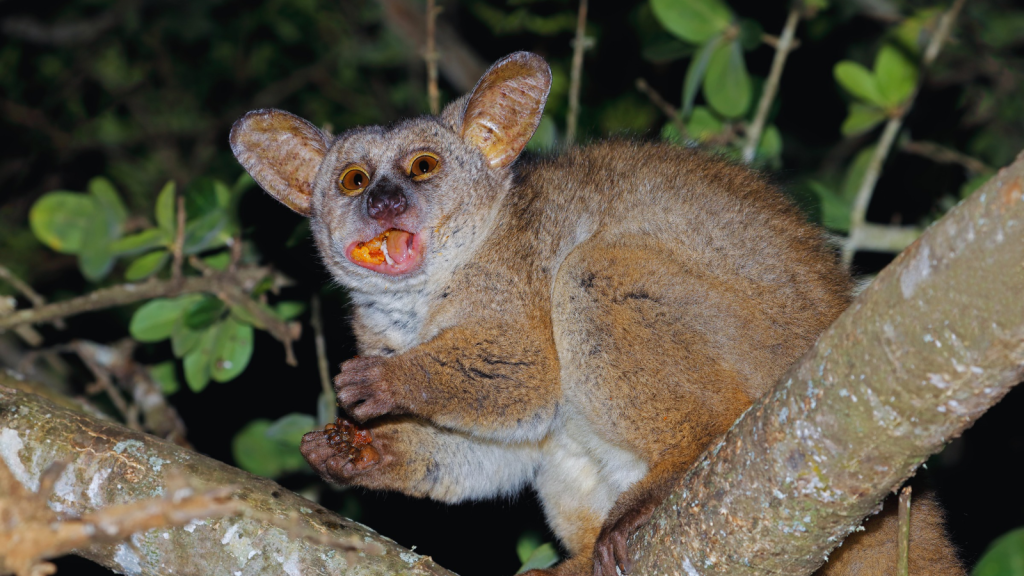Hidden in the shadows of African forests and savannas, a group of tiny, wide-eyed primates leads extraordinary lives. Bush babies, also known as galagos, are nocturnal creatures that have enormous eyes and impressive leaping abilities. These small primates have adapted to life in the dark, developing unique features that help them thrive in their nighttime world. From their bizarre grooming habits to their incredible jumping skills, bush babies are fascinating.
Night Vision Superheroes
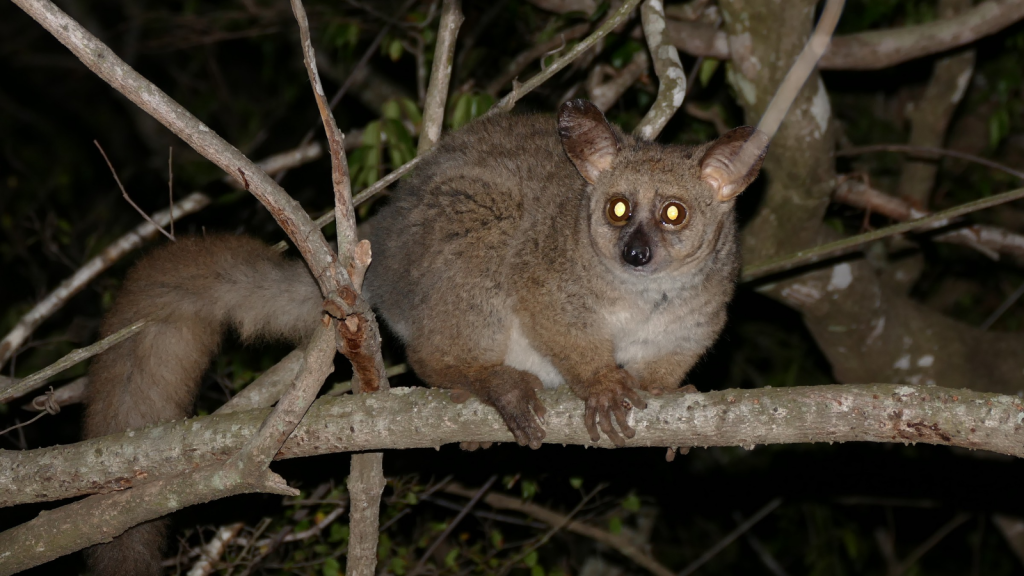
Bush babies have enormous eyes that dominate their tiny faces, giving them exceptional night vision. Their eyes are so large that they can’t move them in their sockets, forcing the bush baby to turn its entire head to look around. These oversized peepers allow bush babies to see clearly in almost total darkness, helping them navigate through the trees and spot insects with ease. In fact, their eyes are so sensitive to light that they can be temporarily blinded by sudden bright lights, which is why they’re rarely seen during daylight hours.
Leaping Legends
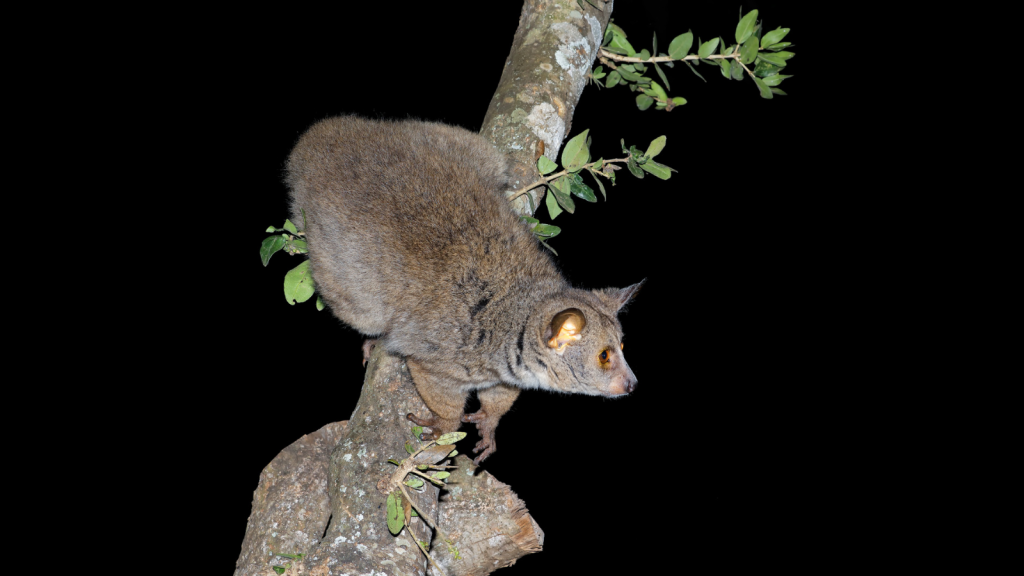
These tiny primates are incredible jumpers, capable of leaping up to 2.5 metres in a single bound. That’s like a human jumping the length of a bus! Bush babies achieve these impressive leaps thanks to the rubber-like tendons in their legs, which store energy and release it in powerful bursts. This ability helps them escape predators and move quickly through the forest canopy. Their powerful leg muscles also allow them to jump vertically up to 5 metres, an astonishing feat for an animal that typically weighs less than 2 kilograms.
Sticky Fingers
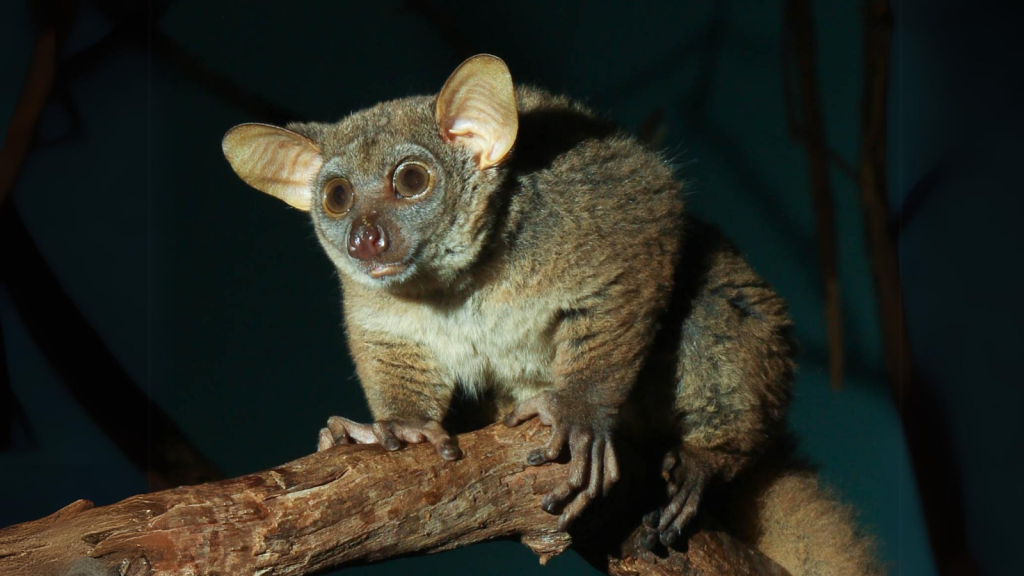
Bush babies have a unique adaptation on their hands and feet – specialised pads that secrete a sticky substance. This natural glue helps them grip branches securely as they move through the trees. The sticky pads also aid in catching insects, their primary food source. When they’re done climbing, bush babies can quickly unstick themselves by peeling their hands and feet away from surfaces. This adhesive substance is constantly replenished, ensuring that the bush baby always has a reliable grip, even in wet or slippery conditions.
Toilet Claw Groomers
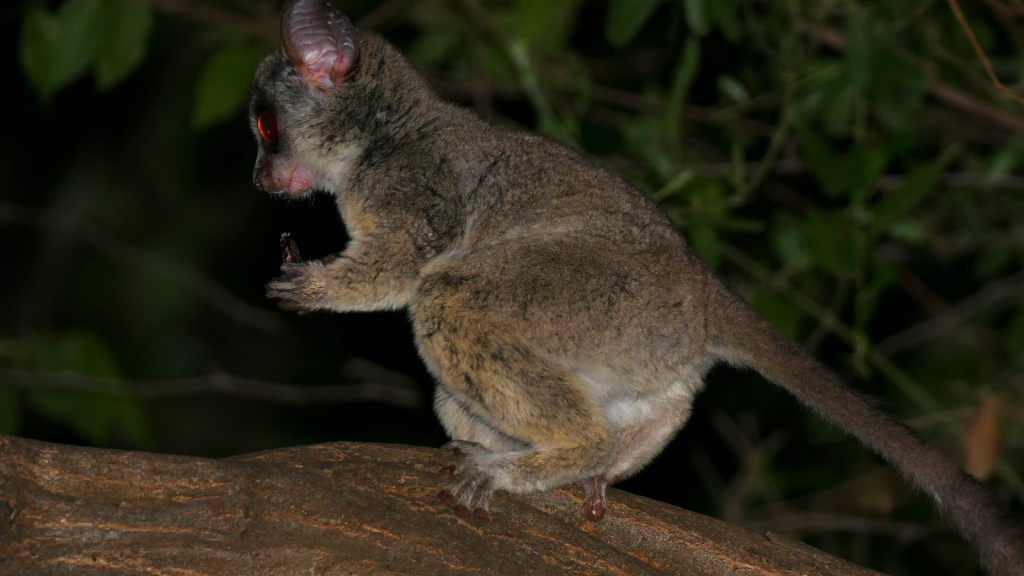
On their back feet, bush babies have a special grooming claw called a “toilet claw”. This elongated nail is used to comb through their fur, keeping it clean and free of parasites. The toilet claw is also used to groom hard-to-reach areas like inside the ears and nose. This unique adaptation helps bush babies maintain their health and hygiene in the wild. The claw is particularly useful for distributing saliva through their fur, which bush babies use as a natural insect repellent.
Built-in Night Goggles
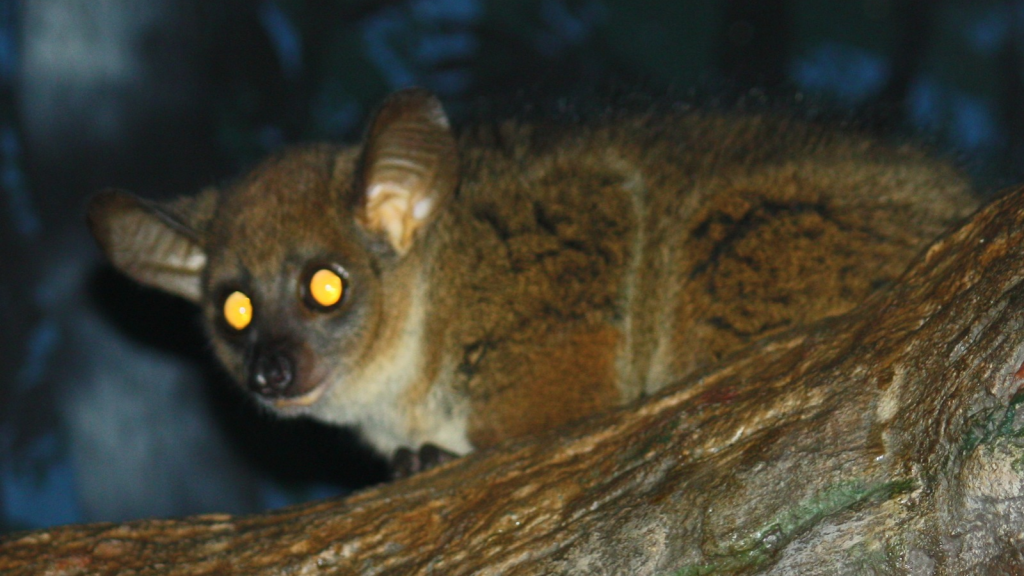
Behind their retinas, bush babies have a layer of tissue called the tapetum lucidum. This reflective layer bounces light back through the retina, giving the eyes a second chance to absorb light. This adaptation is why bush babies’ eyes seem to glow in the dark when light shines on them. It’s also what allows them to see so well in low-light conditions. The tapetum lucidum is so effective that bush babies can see clearly in light levels 50 times lower than what humans need to see.
Urine Hand Washers
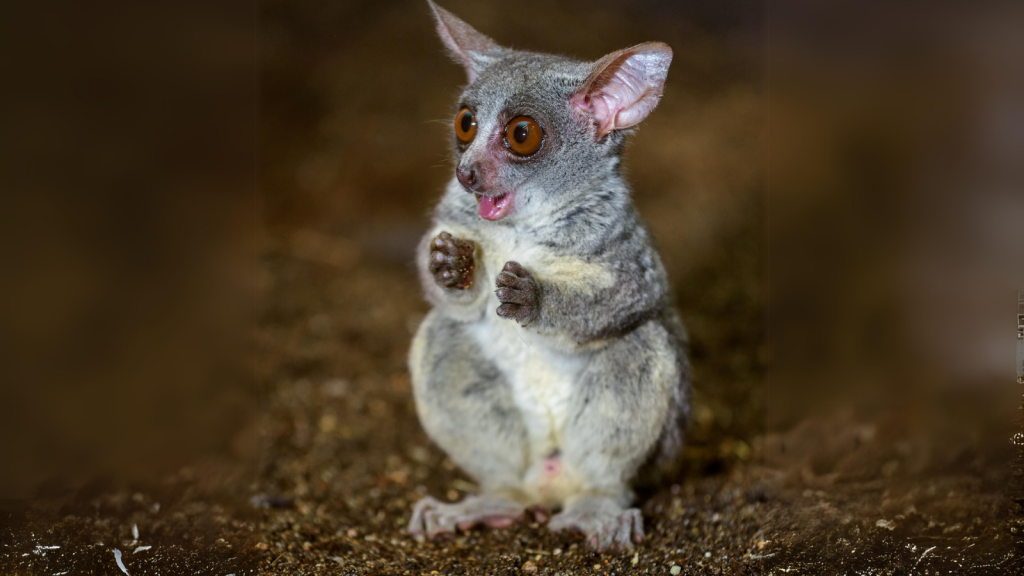
In a behaviour that might seem odd to humans, bush babies regularly urinate on their hands and feet. This isn’t poor hygiene – it’s actually a clever adaptation. The urine helps improve their grip on branches and leaves scent marks as they move through the forest. It’s their way of marking territory and leaving messages for other bush babies. This behaviour also serves as a form of communication, with the chemical compounds in the urine conveying information about the bush baby’s age, sex, and reproductive status.
Folding Ears
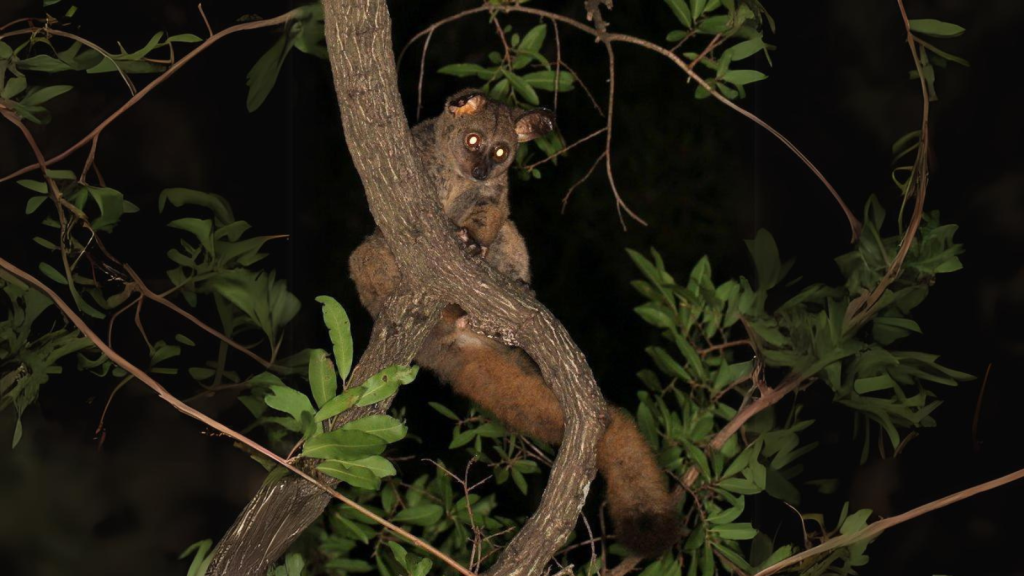
Bush babies have large, bat-like ears that they can fold down at will. This ability helps them pinpoint the location of sounds with incredible accuracy. When they’re not actively listening, they can fold their ears flat against their heads to keep them out of the way while moving through dense vegetation. This also helps them stay quiet and avoid detection by predators. The mobility of their ears allows bush babies to independently rotate each ear, giving them a 360-degree auditory field.
Vocal Virtuosos
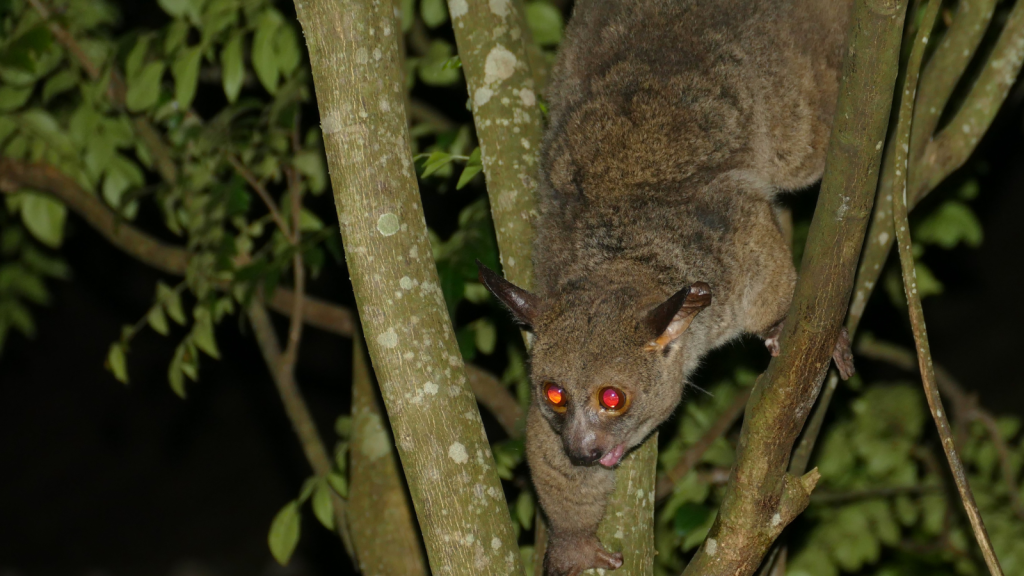
Despite their small size, bush babies have impressively loud voices. They communicate using a variety of calls, including chirps, whistles, and their namesake cry that sounds like a human baby. These vocalisations can travel long distances through the forest, allowing bush babies to communicate with others of their species over large areas. Scientists have identified over 25 distinct call types in some bush baby species, each with a specific meaning or purpose.
Vertical Clingers
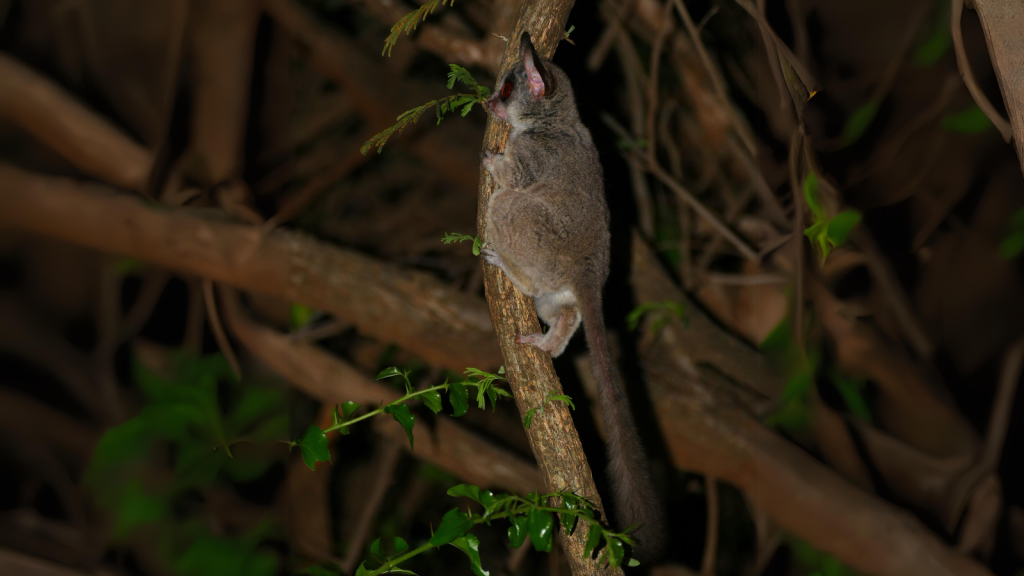
Bush babies have a unique way of resting on tree trunks. They can cling vertically to the bark, using their strong legs and sticky hand pads to stay in place. This position allows them to rest while staying alert for potential predators. It also puts them in the perfect position to quickly leap away if danger approaches. Some bush baby species can even sleep in this vertical position, demonstrating their exceptional grip strength and balance.
Solitary Socialites
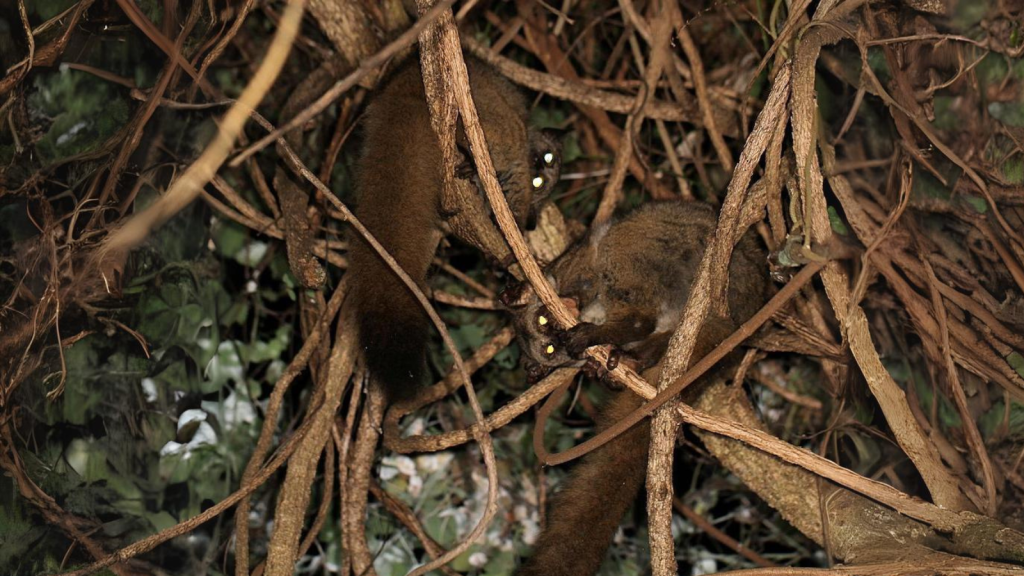
Most bush baby species are solitary creatures, spending much of their time alone. However, they’re not completely antisocial. Bush babies often have overlapping territories and will interact with each other during mating season. Some species even form small family groups. They communicate and maintain social bonds through scent marking and vocalisations. Interestingly, some bush baby species have been observed engaging in ‘mobbing’ behaviour, where several individuals will gang up to drive away a predator.
Fruit Juice Junkies
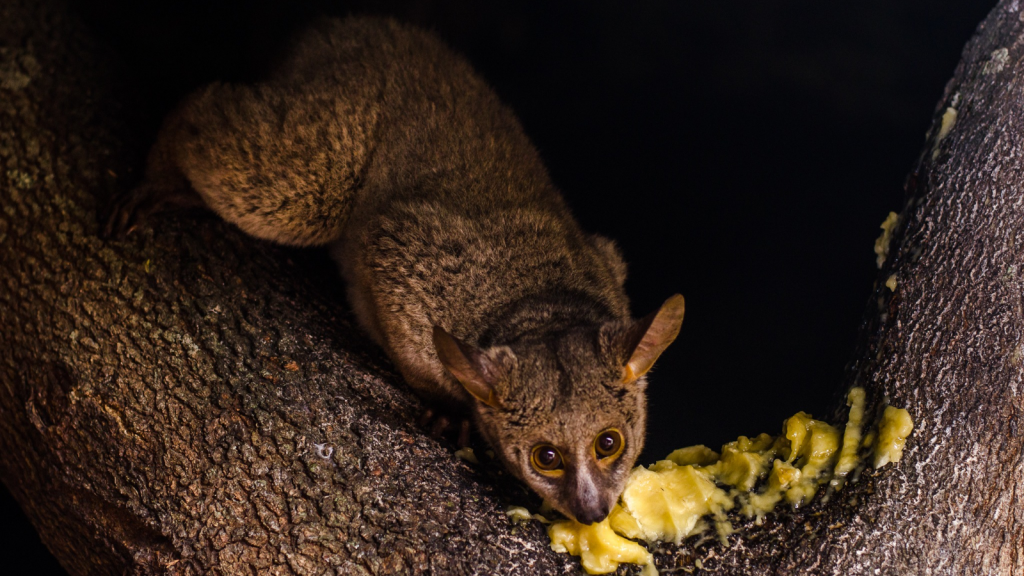
While insects make up a large part of their diet, many bush baby species have a sweet tooth. They’re particularly fond of tree gum and sap, which they access by gnawing holes in tree bark. Some species have even developed specialised teeth for gouging bark and lapping up sap. This sugary treat provides bush babies with important nutrients and energy. In some areas, bush babies have been observed returning to the same trees night after night, effectively ‘farming’ their favourite sap-producing trees.
Multi-Purpose Tails
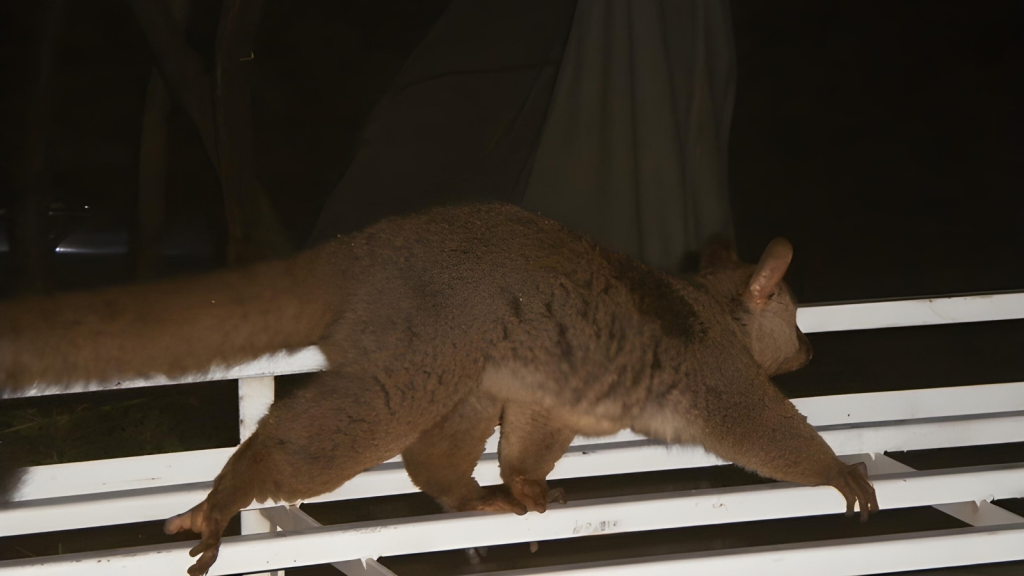
Bush babies have long, fluffy tails that serve several purposes. The tail acts as a balancing aid during their impressive leaps and helps them steer while in mid-air. Some species also use their tails as a soft cushion to land on after a jump. Additionally, the bushy tail can be fluffed up to make the bush baby appear larger when threatened. In some species, the tail is also used as a warm blanket, with the bush baby wrapping it around itself while sleeping.
Baby Parking
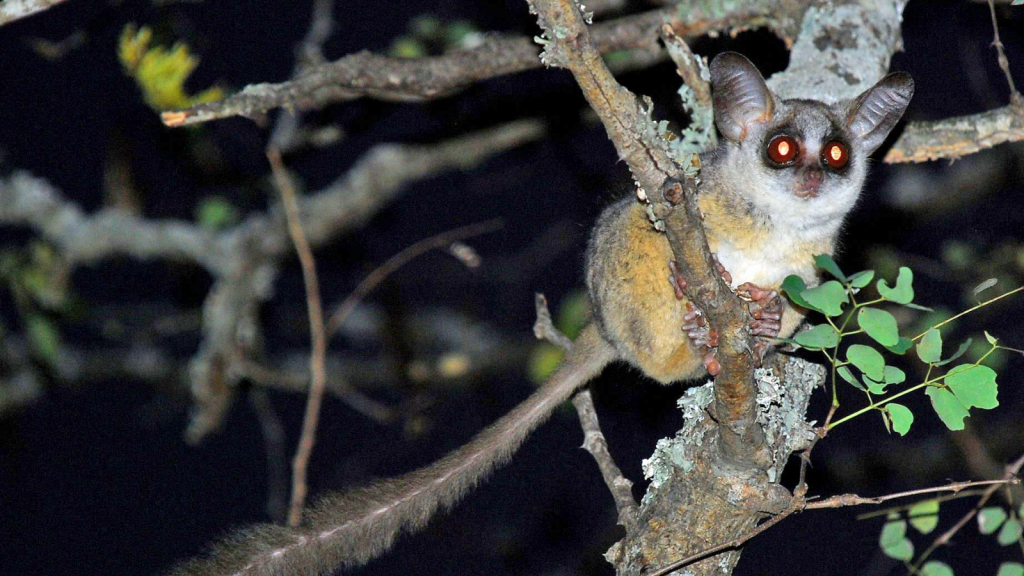
Female bush babies have an interesting parenting strategy. When foraging for food, mothers will often “park” their babies on a safe branch. The infant clings tightly to the branch while the mother searches for insects nearby. This allows the mother to forage more efficiently while keeping her baby relatively safe from predators. Bush baby infants are born with a strong grip reflex and can cling to branches from birth, an adaptation that makes this ‘parking’ behaviour possible.
Hibernation Lite
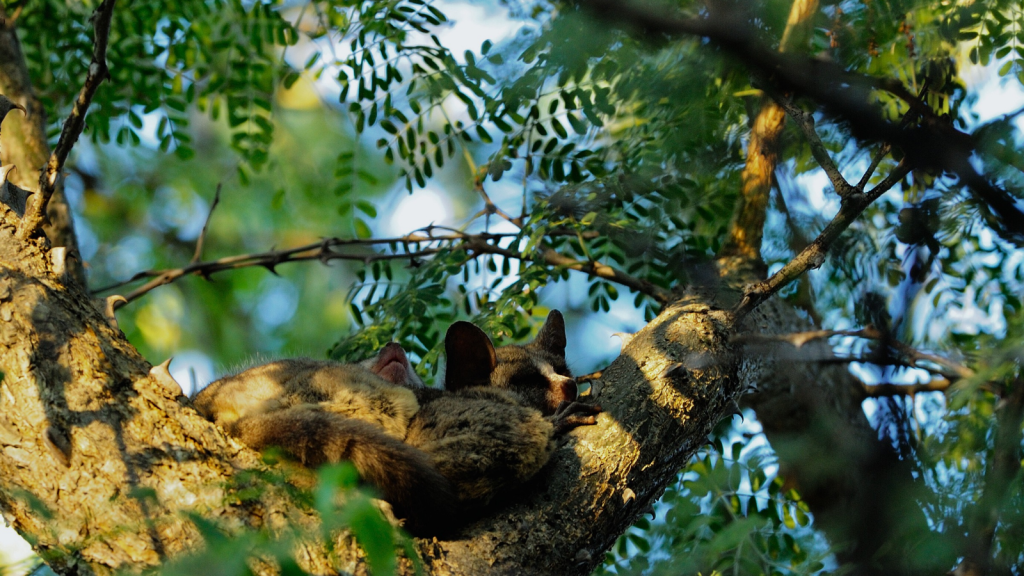
Some bush baby species living in areas with seasonal food shortages have developed a unique survival strategy. During times when food is scarce, they can enter a state of torpor, lowering their body temperature and slowing their metabolism. This ‘hibernation lite’ allows them to conserve energy until conditions improve. It’s an impressive adaptation for a primate, as this behaviour is more commonly seen in smaller mammals. During torpor, a bush baby’s body temperature can drop by up to 10°C, and their heart rate can slow to just 20% of its normal speed.
Ancient Ancestors
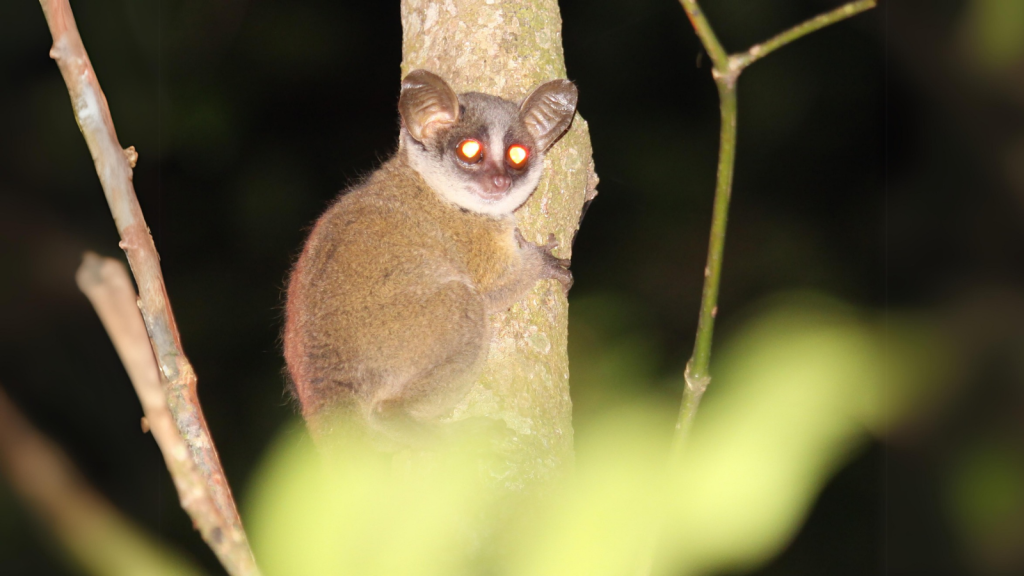
Bush babies are part of an ancient lineage of primates. Fossil evidence suggests that their ancestors diverged from other primates around 40 million years ago. This makes them one of the oldest groups of primates still alive today. Despite their long evolutionary history, bush babies have remained relatively unchanged, a testament to their successful adaptations to their nocturnal lifestyle. Their closest living relatives are the lorises and pottos of Asia and Africa, forming a group known as the Lorisiformes.

